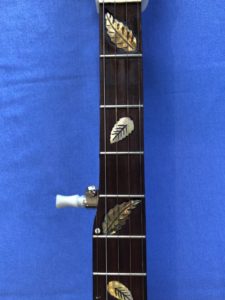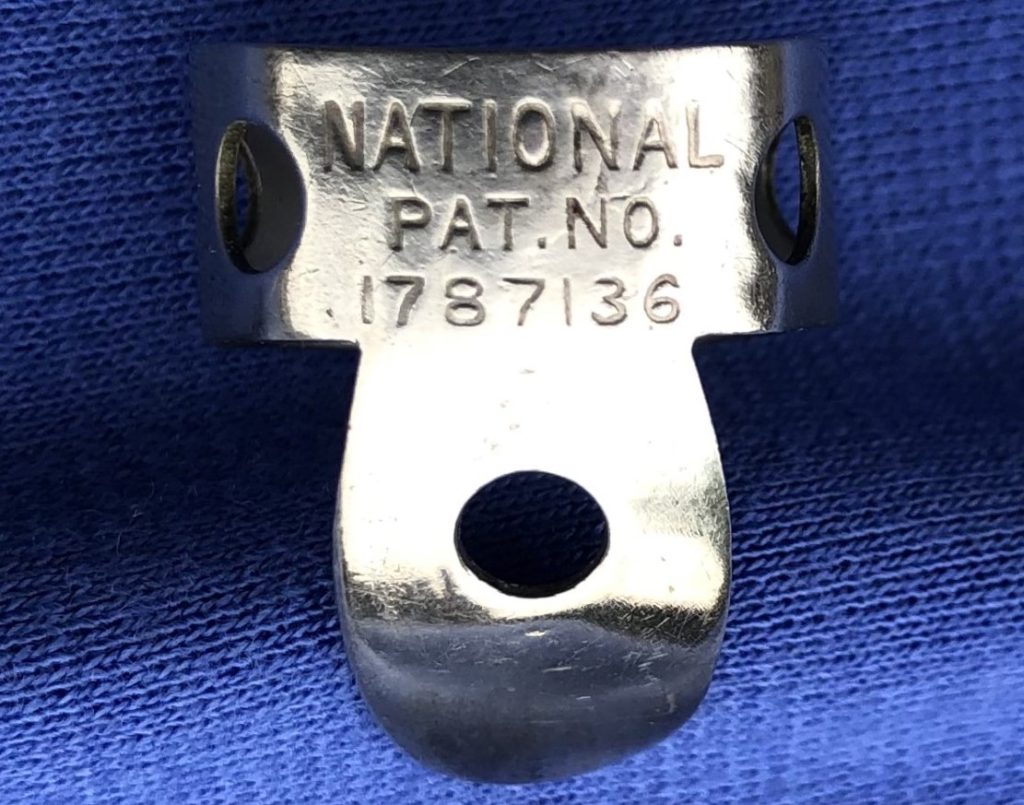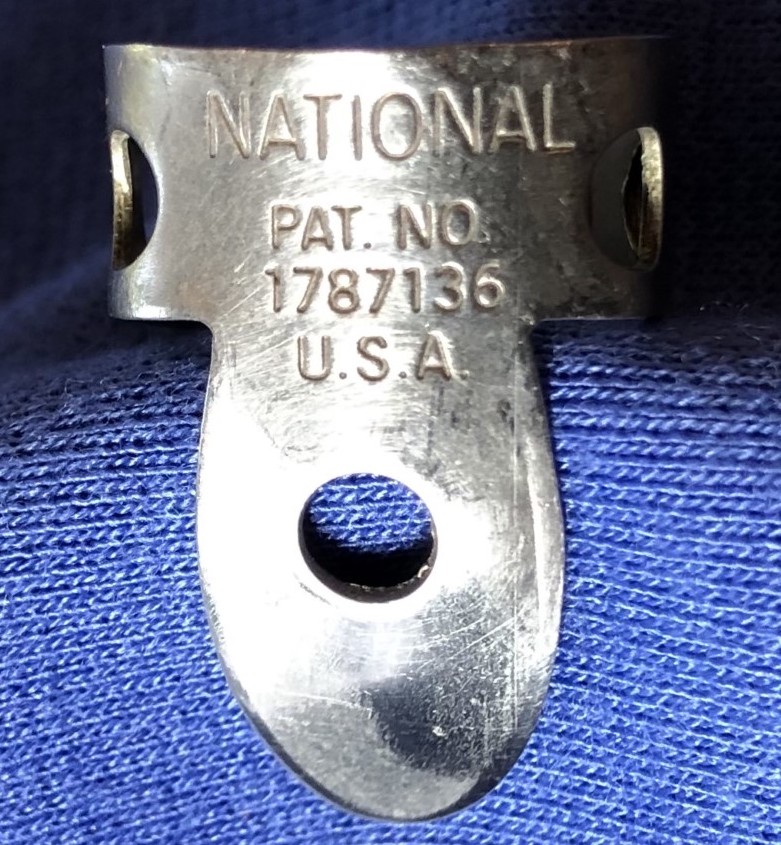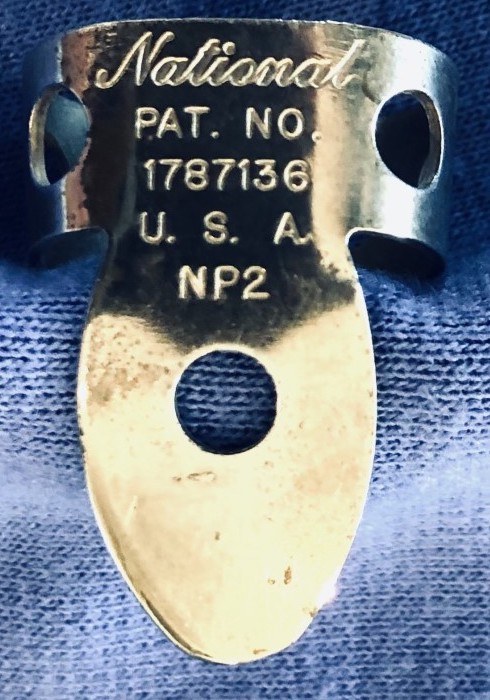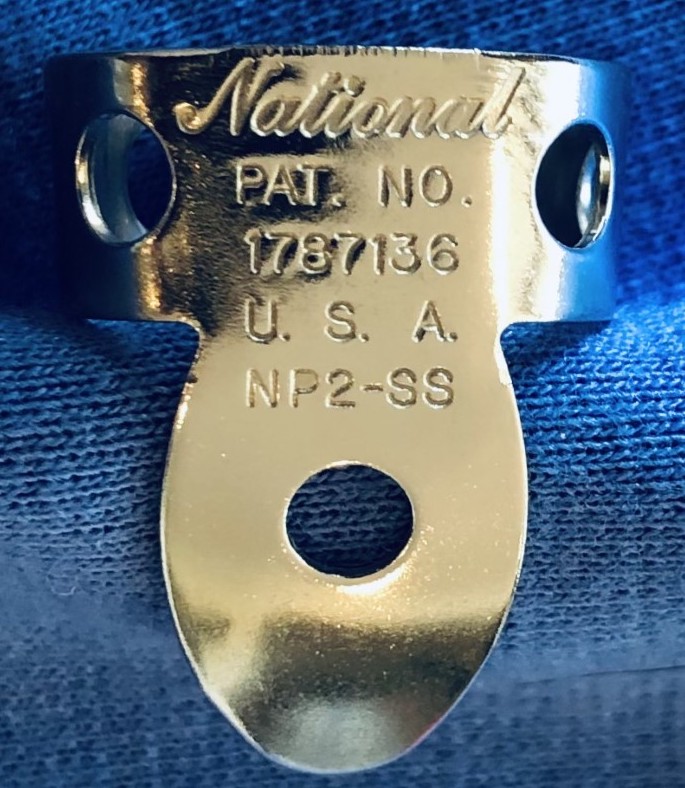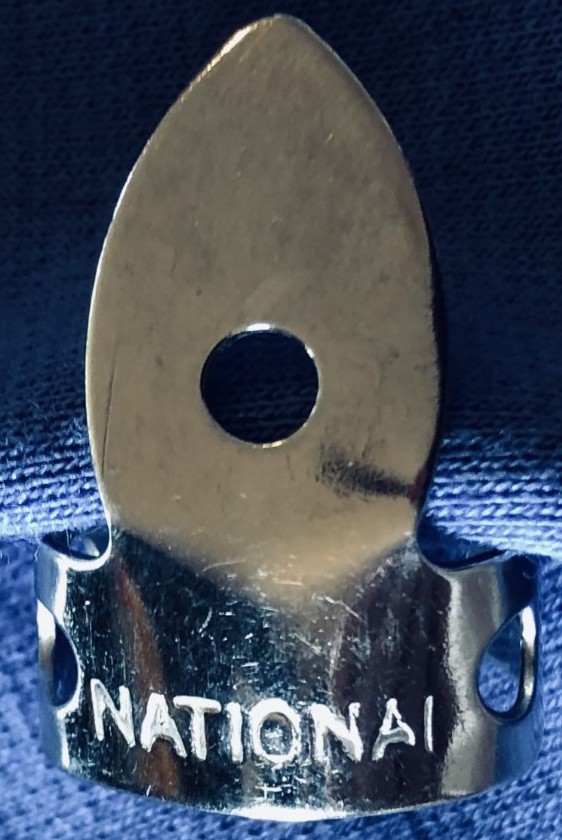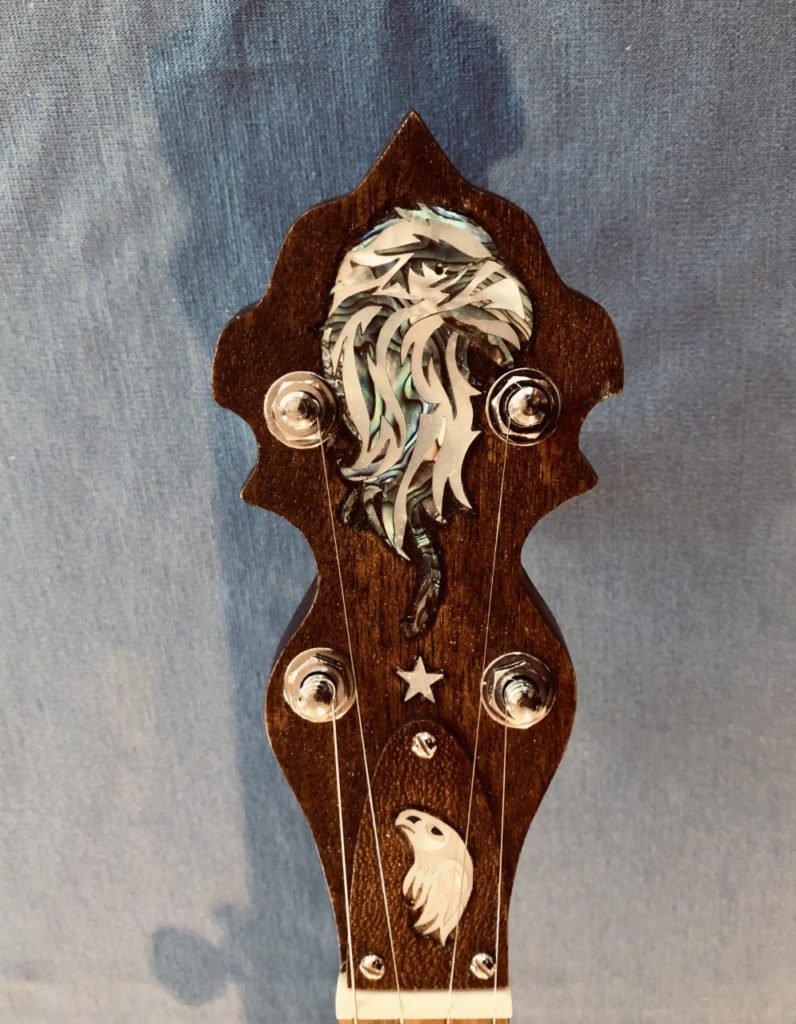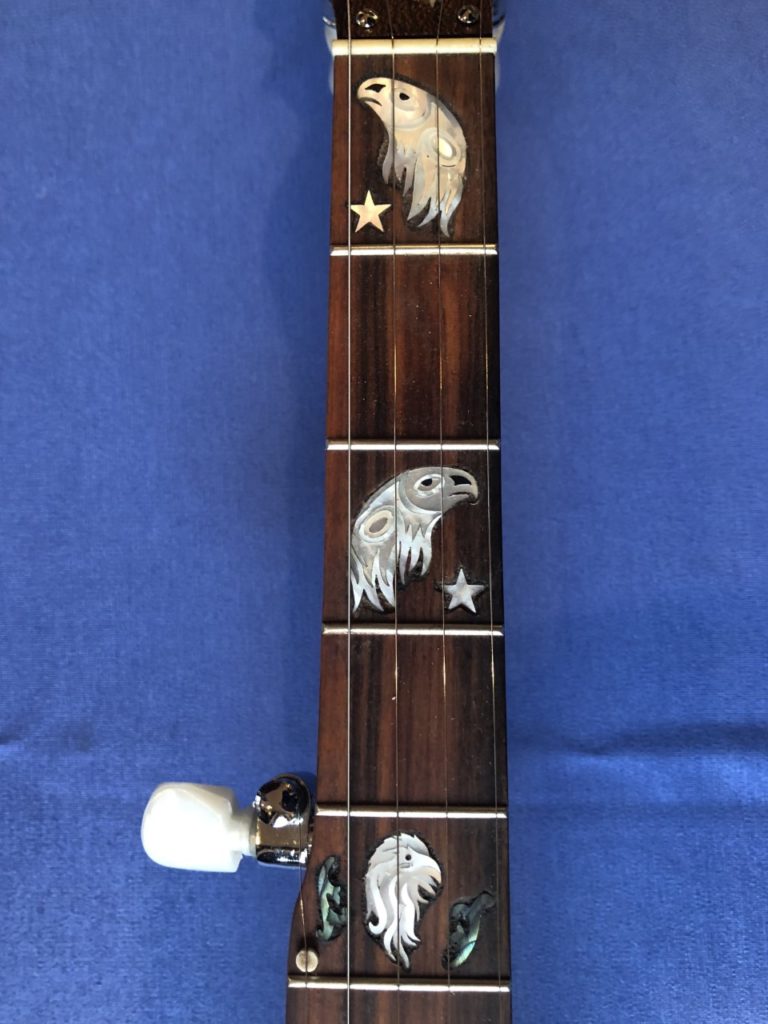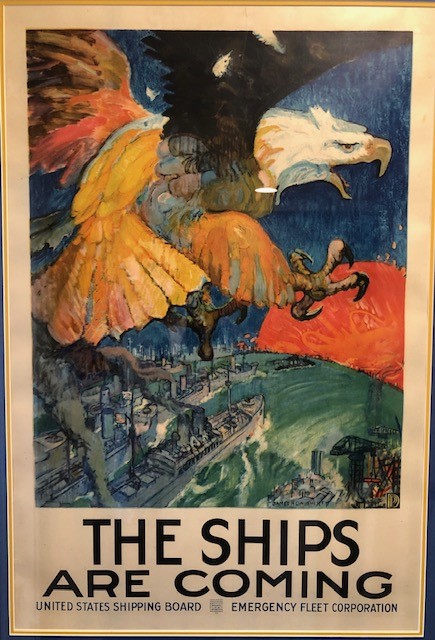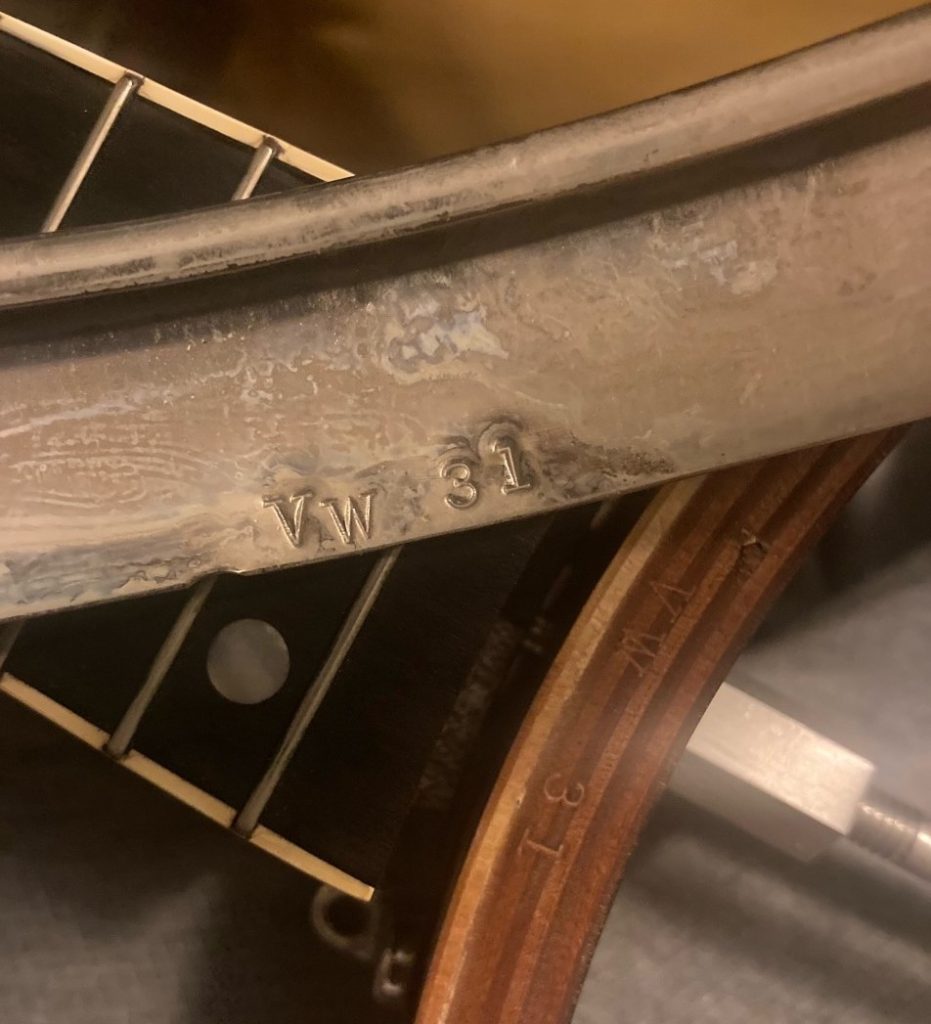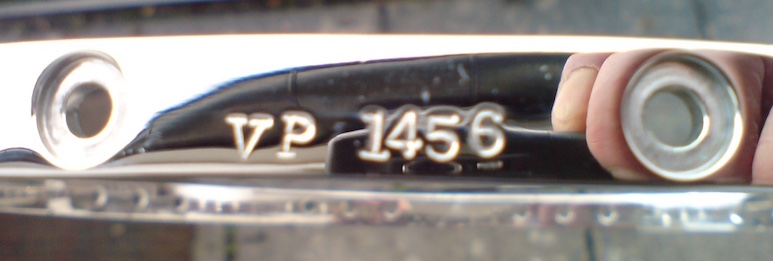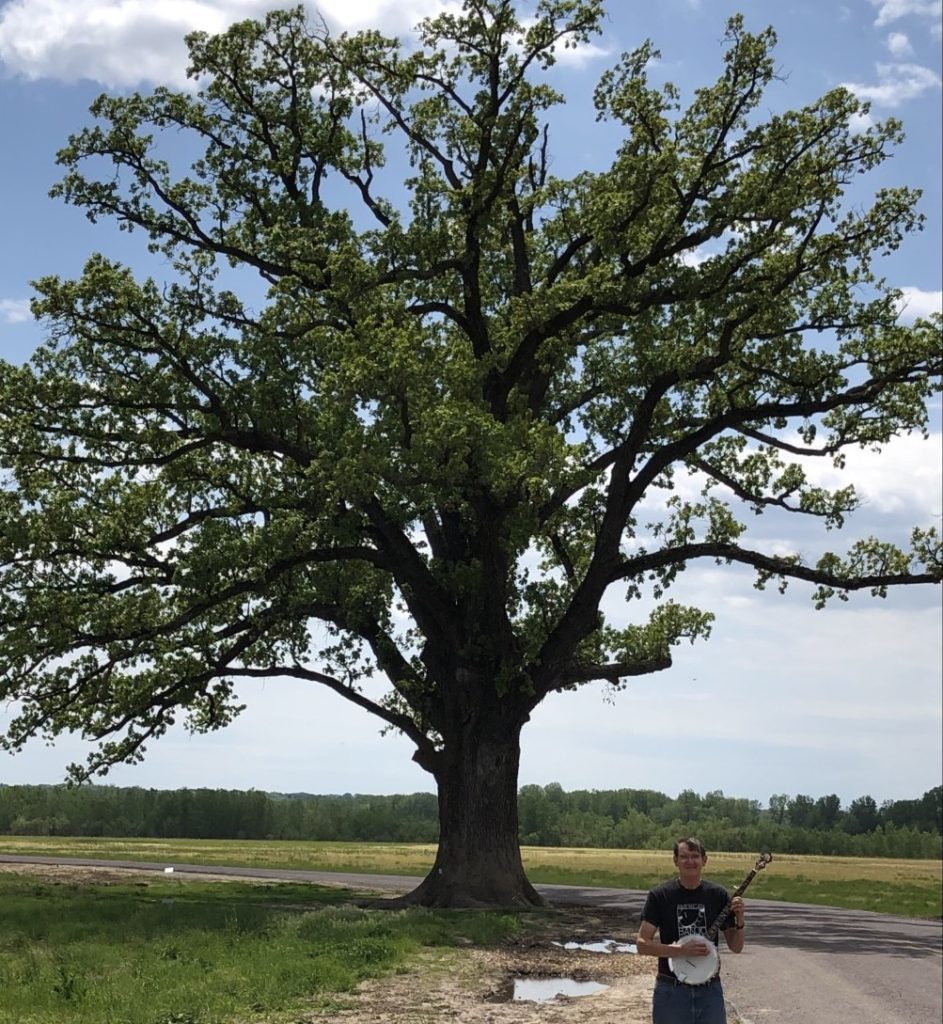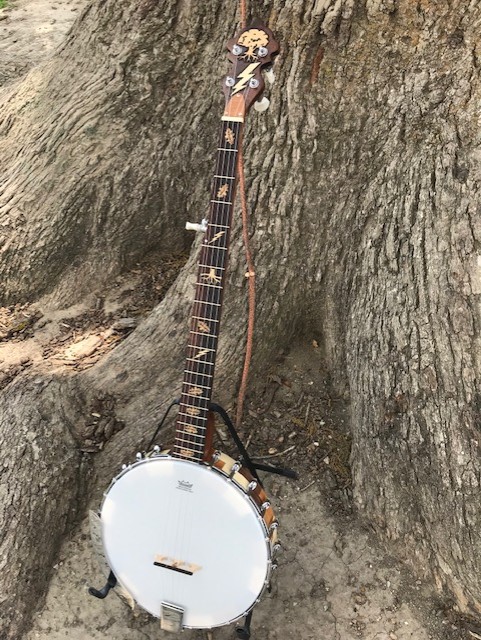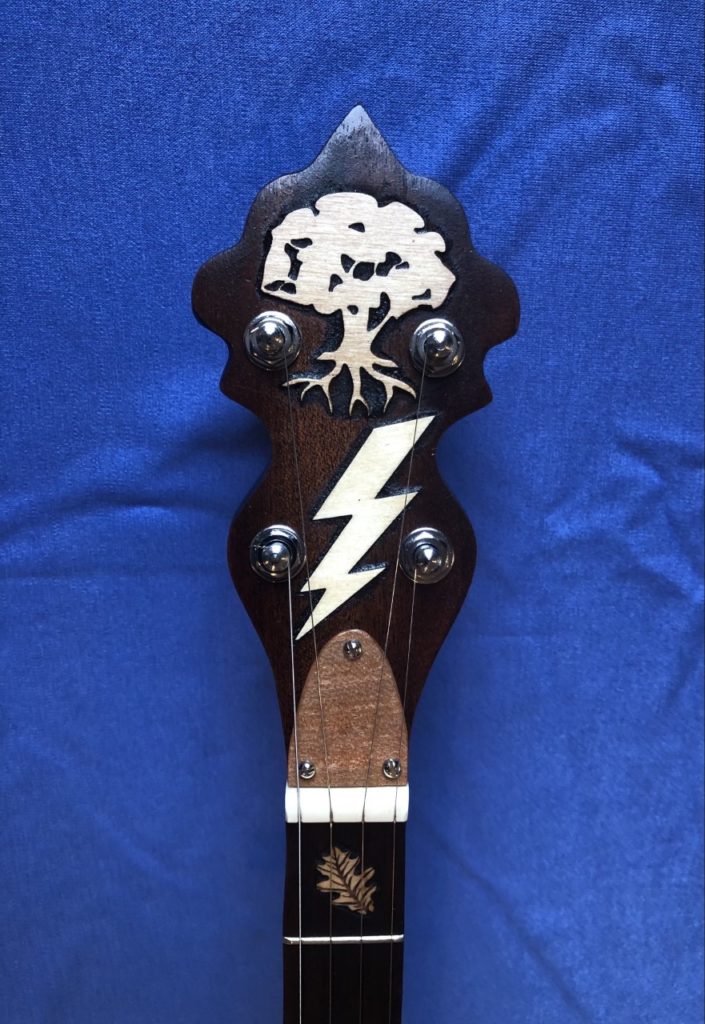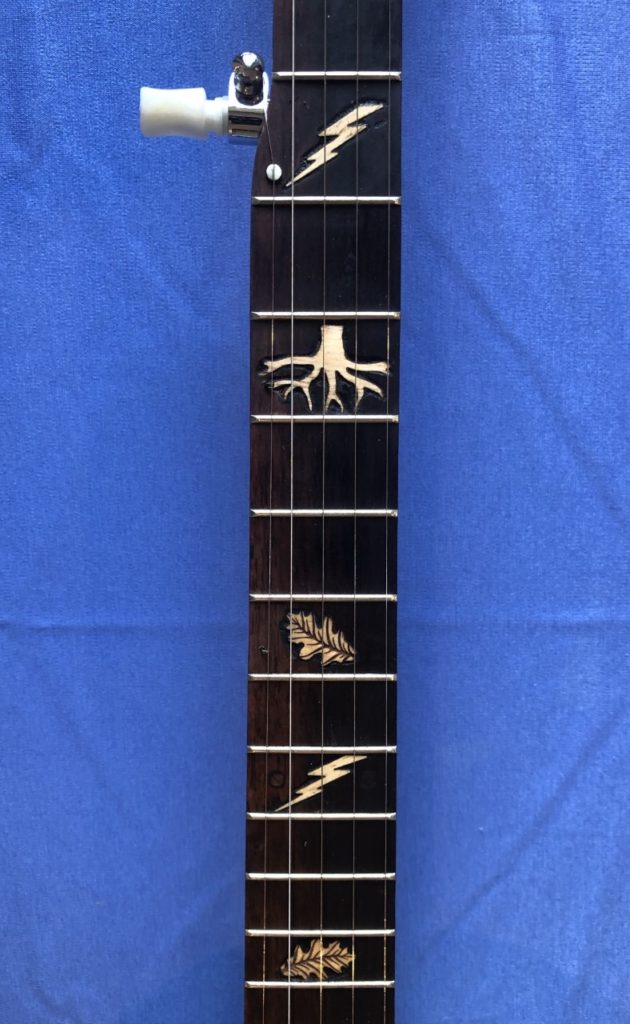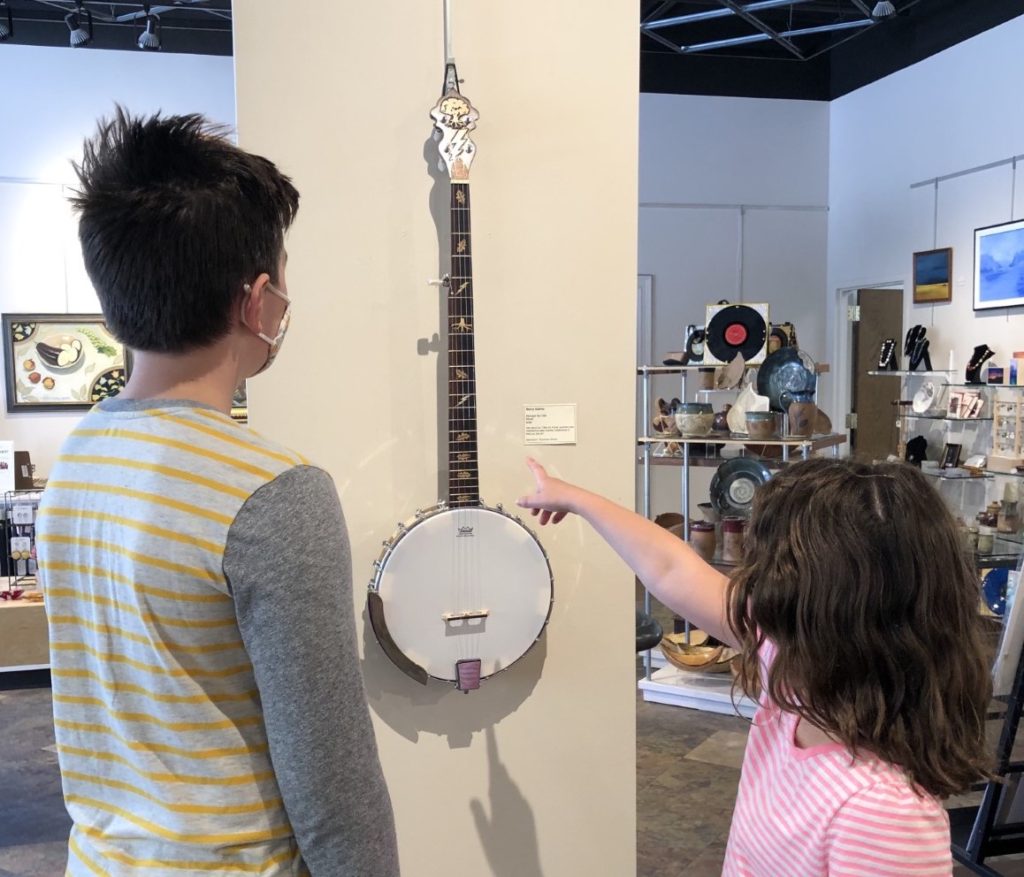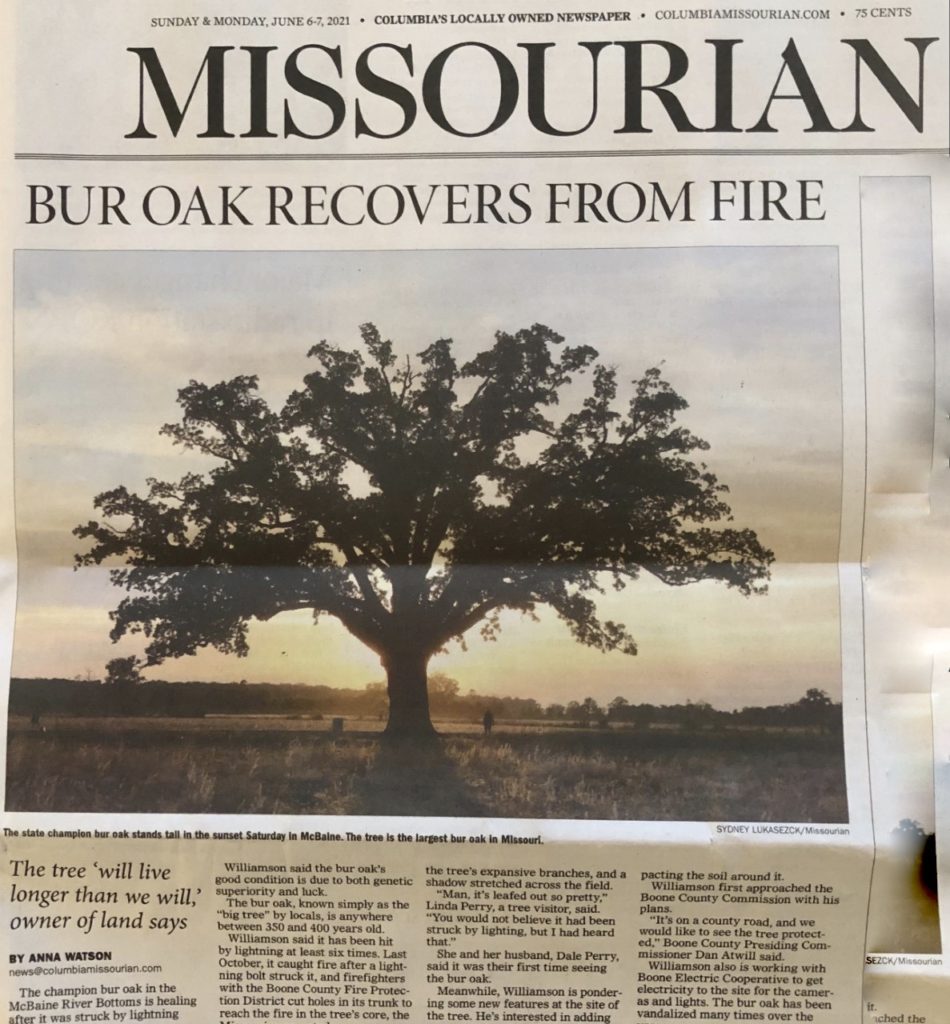The local community art league has an annual mid-summer extravaganza referred to as the Food Show. The title and theme of the juried competition this July was “Snack Time.” The opening reception was the first in-person event since early 2020 and was conducted with masks-up and social distancing. In mid-August, the art league plans to host its yearly gala evening called “Let Them Eat Art” where local chefs and bartenders offer food and drink inspired by the works in the gallery, and the guests vote on their favorite dish and beverage. For the Snack Time exhibit, the BRC craftsman submitted an “Herbal Tea” banjo that was accepted into the show.
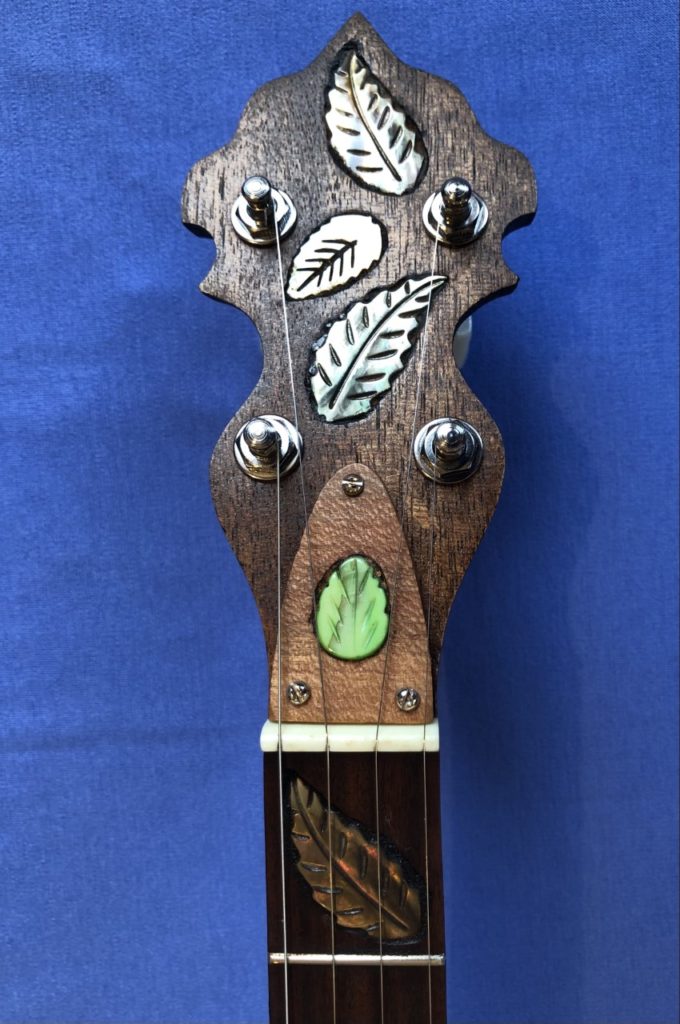
Mother of pearl tea leaves of gold, green, and black flutter down the peg head and onto the fretboard. The heel of each BRC banjo is a signature location for a unique mother of pearl inlay, and a green tea leaf is situated there on this 5-stringer (below right) for the eyes only of the musician.
The entries were adjucated by a university Visual Studies faculty member who provided the Juror`s Statement:
It was a pleasure to jury the Snack show! Fortunately, artists provided me with a broad range of media and subject matter. From felting to banjos and handmade paper with blueberries, the artists in the Snack Show create a visual experience for us that ranges from quirky to gorgeous and well-crafted.

At the art league`s opening event pictured below, two BRC grandkids pose by their Grandpa Doc`s snack time 5-stringer. By serendipity, the BRC craftsman has exhibited 3 banjos in various art shows during this past month of July: Baroque Bur Oak, Sky Rover, and now the Herbal Tea.

During the opening ceremony, a mysterious gallery visitor apparently familiar with tea leaf readings, closely studied the mother of pearl inlays on the Herbal Tea banjo and reportedly predicted, “Better days are ahead.” Good news is always welcome.

